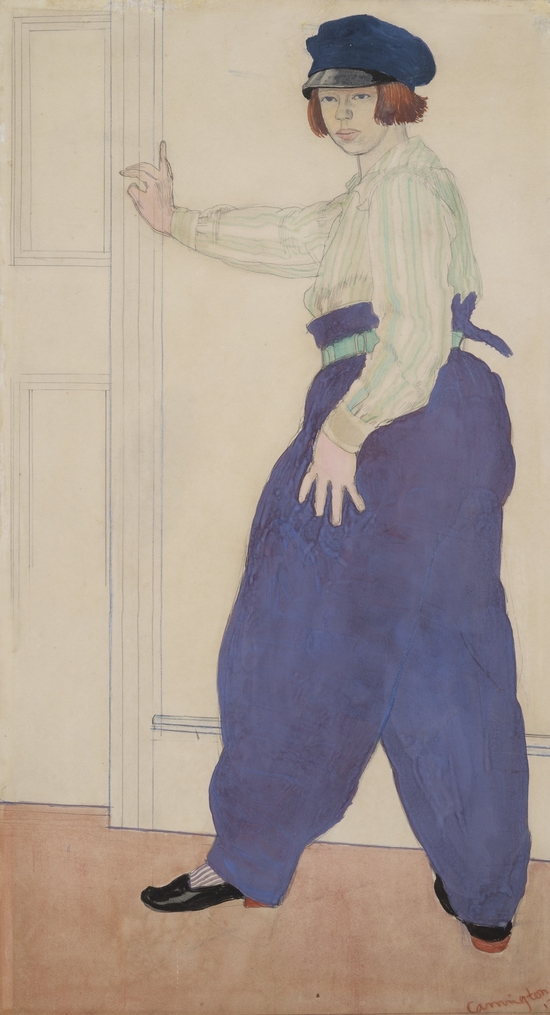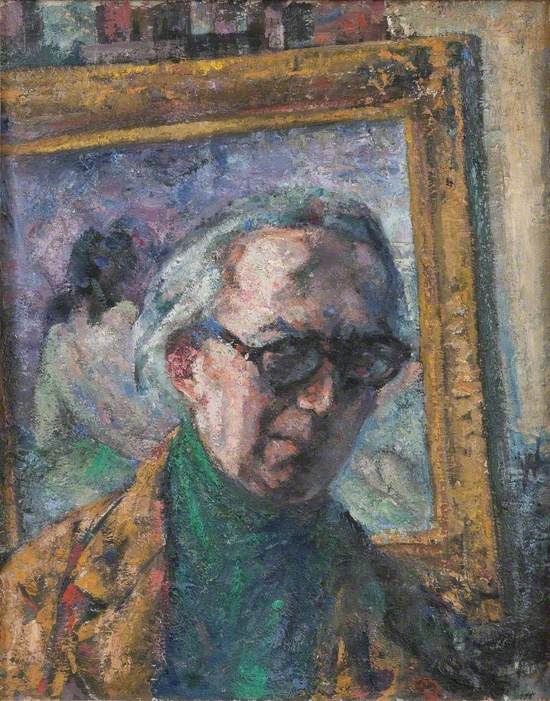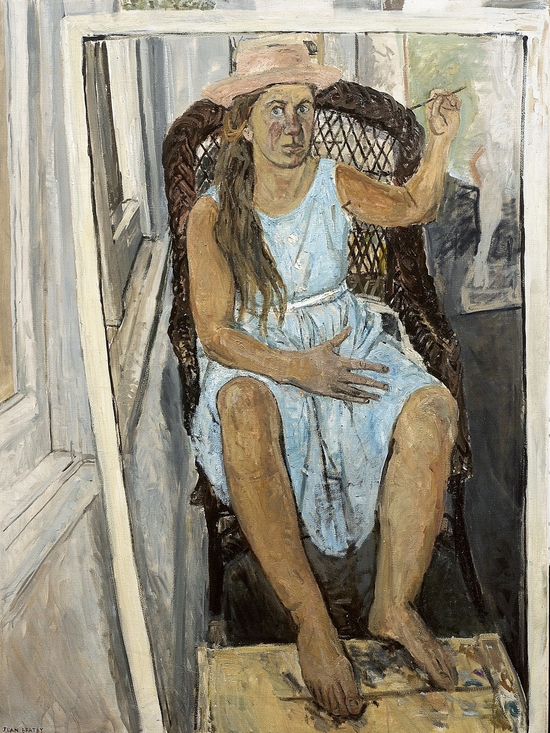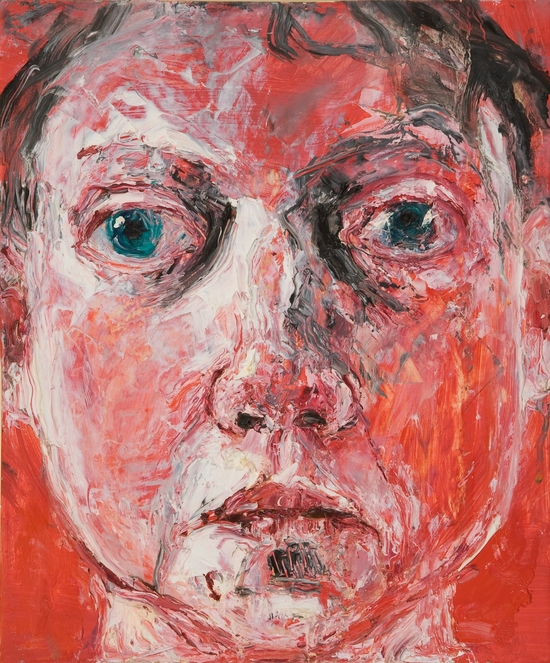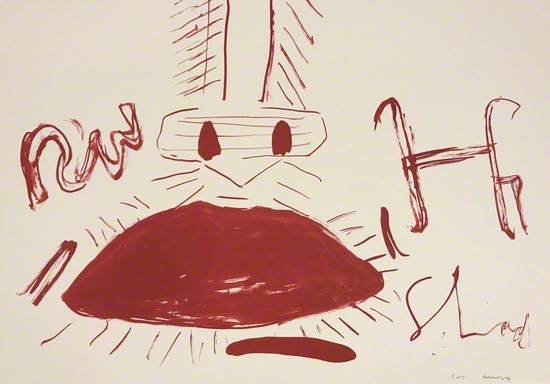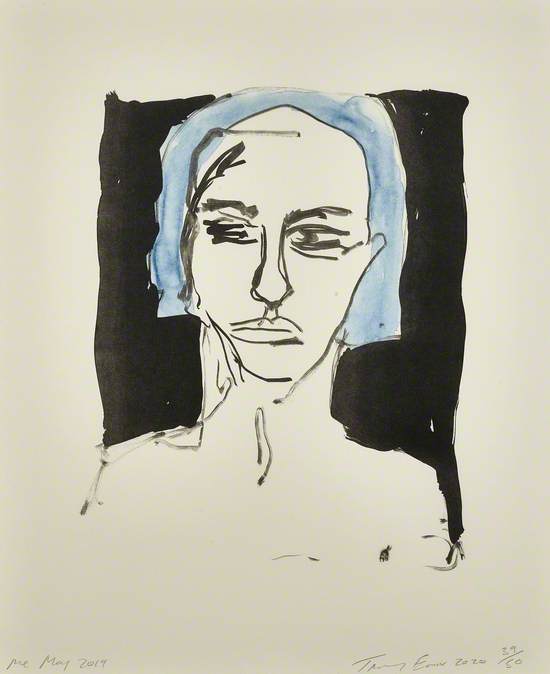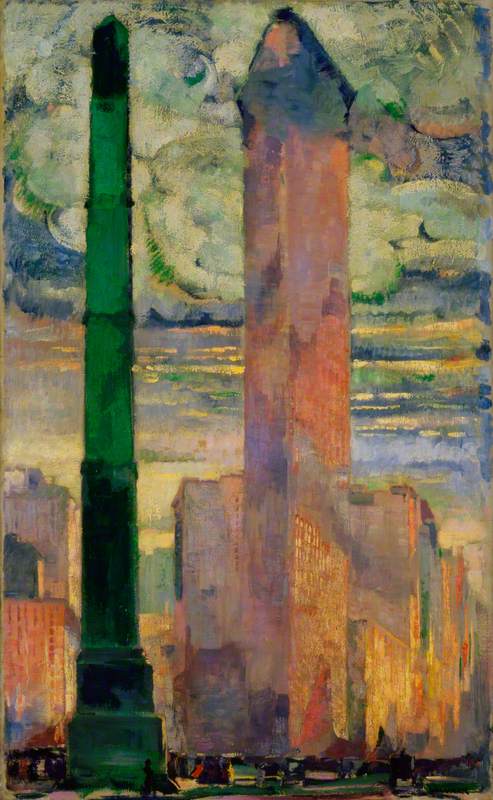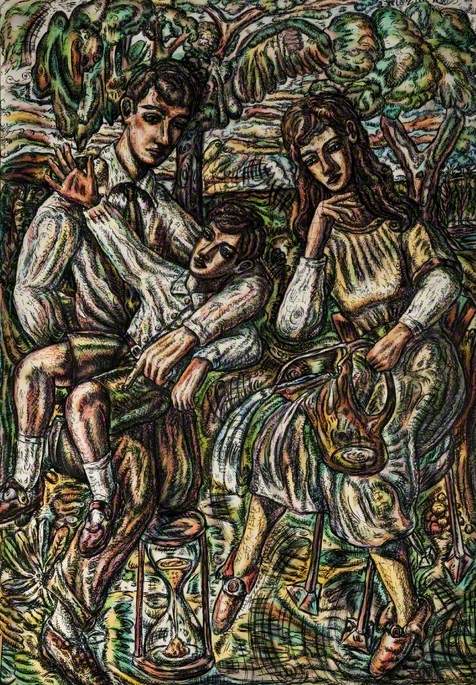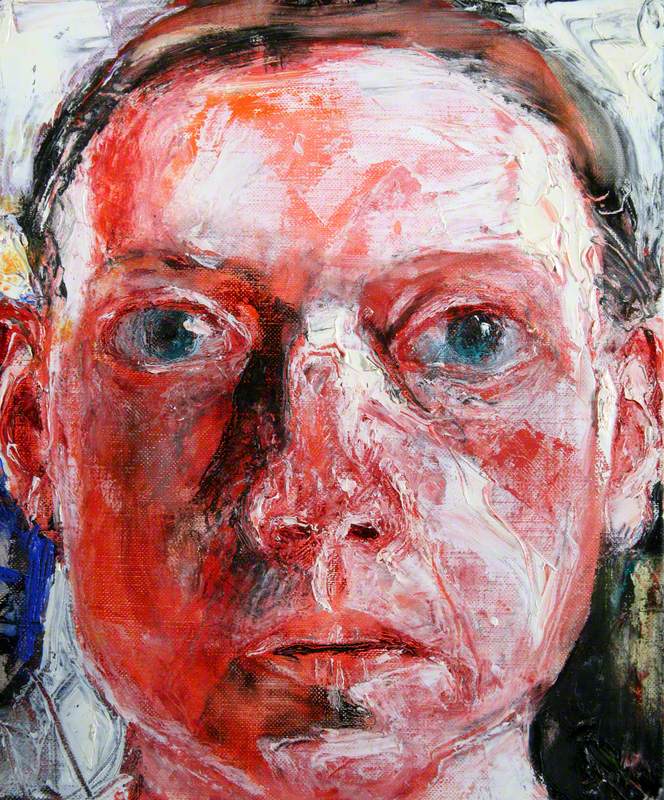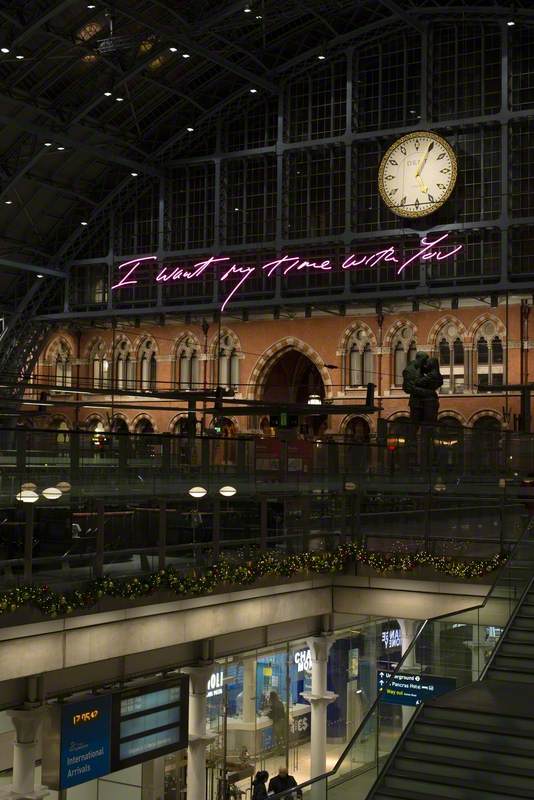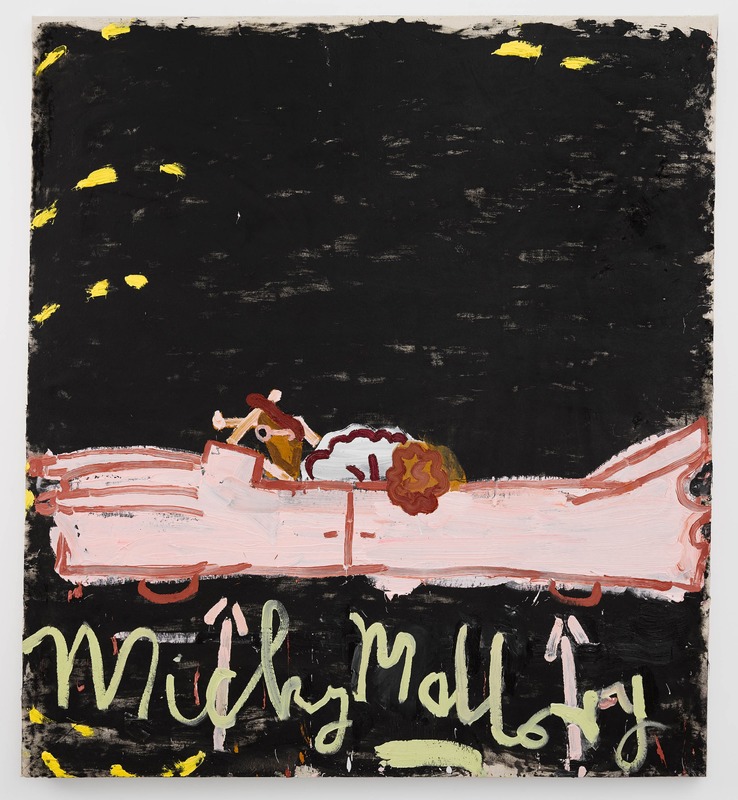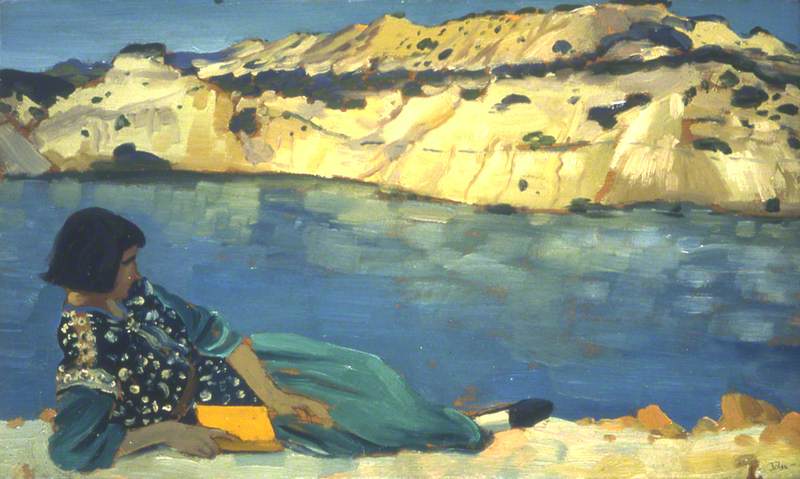We have created this online curation as part of a nationwide celebration of portraiture for the reopening of the National Portrait Gallery in London and to mark International Portrait Day.
The curation explores a selection of self-portraits, held in Jerwood Collection, which span over 100 years in their creation. These works offer insights into the artists' lives, surroundings and state of mind.
Dora Carrington (1893-1932), Self-Portrait, 1913
In this rare 1913 Self-Portrait, Dora Carrington makes a bold statement: she has chosen to present herself in a striped shirt, a peaked cap and a pair of baggy trousers. Her hair is cut short in a bob and her stance, a turning contrapposto leaning against a door frame, is not what a female portrait of the time would have been expected to show. The whole impression is a remarkably potent self-image.
Dora Carrington (1893–1932)
Pencil & watercolour on paper
H 55.5 x W 30.5 cm
Jerwood Collection
.
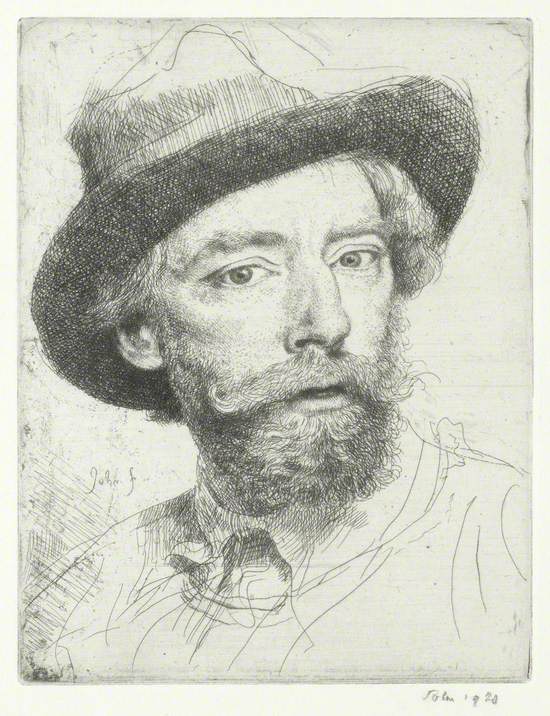
Augustus Edwin John (1878-1961), Self-Portrait, 1920
Augustus John is best known as a portraitist and alongside his paintings of his family and well known contemporaries, he created numerous self-portraits. This self-portrait was created in 1920 when John’s fame as a leading portrait painter of his time was in the ascendant. In this small-scale etching, measuring 17.5 x 12.8 cm, John makes direct reference to Rembrandt van Rijn (1606-1669) in his pose and slightly parted lips.
Augustus Edwin John (1878–1961)
Etching & drypoint on paper
H 17.5 x W 12.8 cm
Jerwood Collection
.
Alfred Aaron Wolmark (1877-1961), Self-Portrait, 1949
Portraiture was an important part of Alfred Wolmark's work and many important cultural figures sat for him, including Thomas Hardy, Somerset Maugham and Alduous Huxley. In contrast to these formal portraits, his self-portraits gave him room to experiment with different ways of painting including the looser, more impressionist style seen in the present work.
Alfred Aaron Wolmark (1877–1961)
Oil on board
H 52.1 x W 40.7 cm
Jerwood Collection
Jean Cooke (1927-2008), The Sun Hat, 1960
The self-portrait was a recurring theme throughout Jean Cooke's career, who wrote: ‘Sometimes I paint self-portraits to show off, sometimes to hide away in solitude, sometimes to say ‘Here I am’, sometimes to say ‘I want to be alone’. But always there is a searching for the unknown, the previously unperceived.’ She has signed this work ‘Jean Bratby’ and was married to the painter John Bratby (1928-1992) from 1953 until the marriage was dissolved in the late 1970s.
.

Adrian Wiszniewski (b. 1958), Self-Portrait, 1989
Adrian Wiszniekwski often depicts young men in his work, many of which are self-portraits. In this work on paper Wiszniekwski has used a variety of media to create the self-portrait including charcoal and watercolour. He has depicted himself in two poses: in both he appears younger than he was when the work was created.
Adrian Wiszniewski (b.1958)
Charcoal, pastel, watercolour, brush & black ink on paper
H 66.7 x W 50.2 cm
Jerwood Collection
Shani Rhys James (b. 1953), Head VI, 2004
Shani Rhys James has written about her series of ‘Heads’: ‘I find by simply doing the Heads I am focusing on the head like a landscape, It is a type of meditation. Each time I do a head it is different. I look at my head in parts, with a small hand mirror, so in a sense I deconstruct the head … I am interested in the way the paint becomes through marks and accidents, something other than a portrait. I am not interested in a likeness, or reality as such. The painting has to exist on two levels, as something abstract, and as something emotional. It is not explicit. They just become what they become, I respond to the moment, changing them many times in the process of the painting’.
Shani Rhys James (b.1953)
Oil on gesso-prepared board
H 30.5 x W 25.5 cm
Jerwood Collection
Rose Wylie (b.1934), Self-Portrait with Shut Mouth, 2017
This print was created to coincide with Rose Wylie's retrospective exhibition Quack Quack at the Serpentine Sackler Gallery in 2017-2018. Wylie often combines text with images in her work, and the RW on the left confirms that this is a self-portrait. The closely cropped composition is inspired, like many of Wylie's paintings, by cinematography.
Rose Wylie (b.1934)
Hand drawn lithograph on paper
H 63 x W 89 cm
Jerwood Collection
.
Tracey Emin (b. 1963), Me, May 2019
Tracey Emin’s expressive and visceral art is one of disclosure, using her life events and states of emotion as inspiration for her works. Frank and intimate but universal in its relevance, she draws on the fundamental themes of love, desire, loss and grief, unravelling in the process the nuanced constructs of ‘woman’ and ‘self’ through self-exploration.
Tracey Emin (b.1963)
Two colour lithography on Somerset velvet warm white 400gsm
H 55.5 x W 45.5 cm
Jerwood Collection
